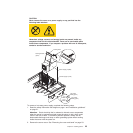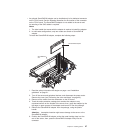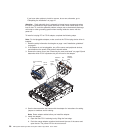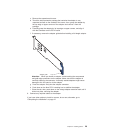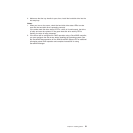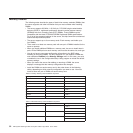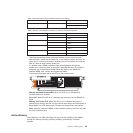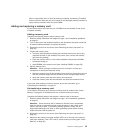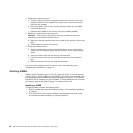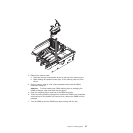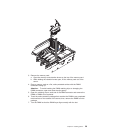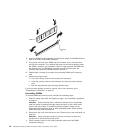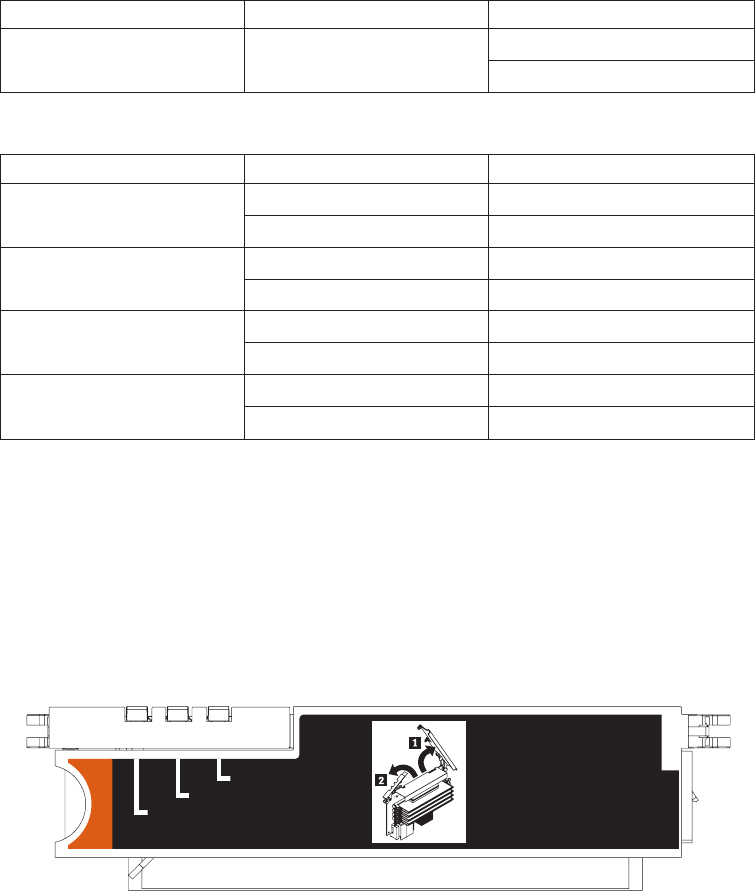
Table 4. Alternate memory card installation sequence (continued)
Memory card order Memory card DIMM pair
Fourth 4 1 and 3
2 and 4
Table 5. Memory card installation sequence for memory-mirrored configuration
Memory card order Memory card DIMM pair
First 1 1 and 3
3 1 and 3
Second 2 1 and 3
4 1 and 3
Third 1 2 and 4
3 2 and 4
Fourth 2 2 and 4
4 2 and 4
v There are two memory power buses split between the four memory cards.
Memory cards 1 and 2 are on power bus 1, and memory cards 3 and 4 are on
power bus 2. If memory mirroring is enabled, you can hot-replace one memory
card at a time on each memory power bus.
v If a problem with a DIMM is detected, light path diagnostics will light the
system-error LED on the front of the server, indicating that there is a problem
and guide you to the defective DIMM. When this occurs, first identify the
defective DIMM; then, remove and replace the DIMM.
The following illustration shows the LEDs on the memory card:
Memory Hot-Swap Enabled
Memory Port Power
Error
Memory Hot-Swap Enabled LED: When this LED is lit, it indicates that
hot-swap memory is enabled.
Error LED: When this LED is lit, it indicates that a memory card or DIMM has
failed.
Memory Port Power LED: When this LED is off, it indicates that power is
removed from the port and that you can remove the memory card and replace a
failed DIMM. This LED will also turn off when the release levers are opened.
Note: Add odd numbered DIMMs to each available memory card first, then add
the even numbered pairs.
Active Memory
Active Memory is an IBM technology that improves the reliability of the DIMMs
through the memory mirroring, memory scrubbing, and Memory ProteXion
™
features.
Chapter 2. Installing options 33



